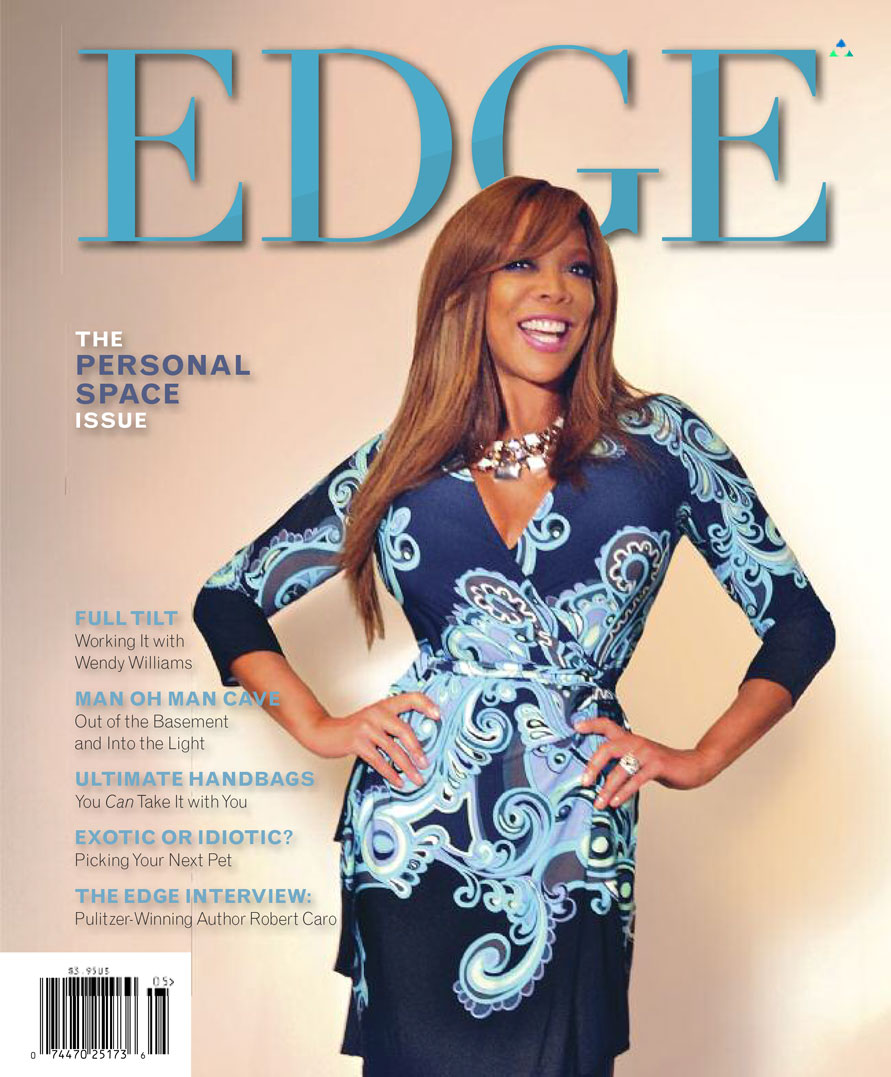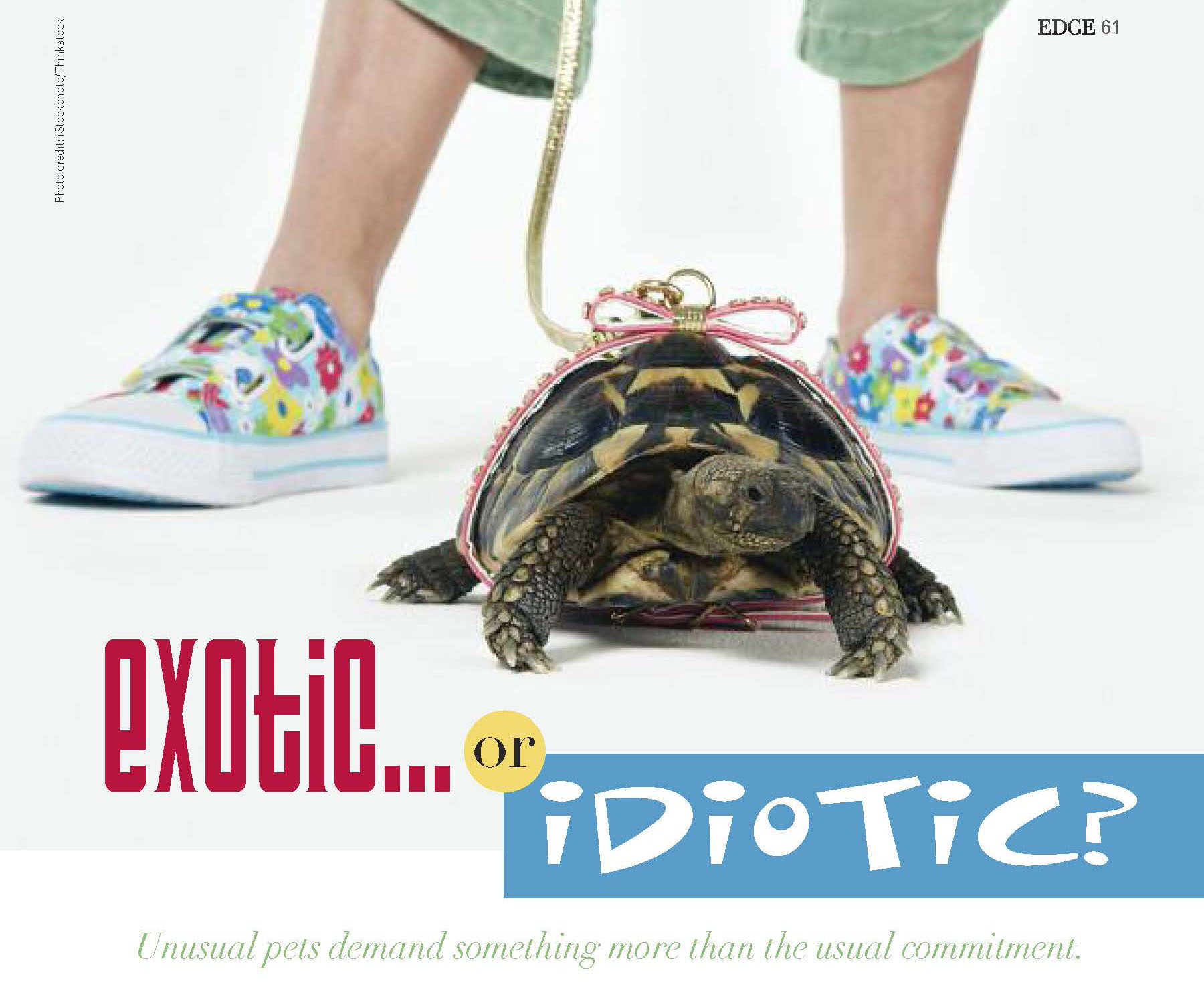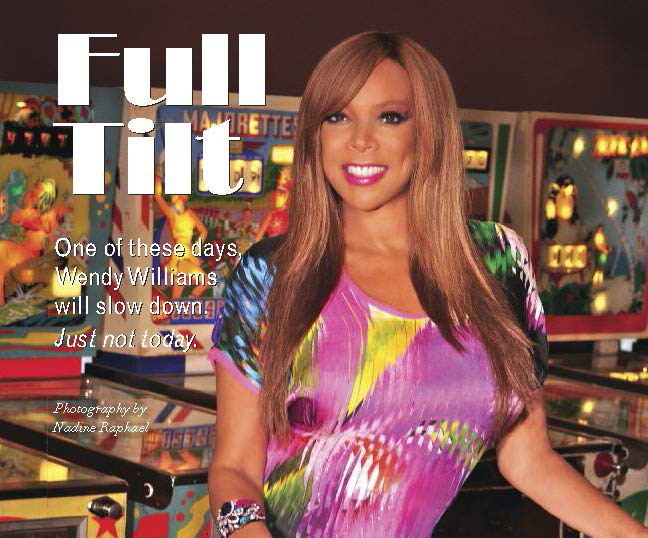A professional take on that most personal of male spaces.
By Stacy Ewing
One of the terms we’ve seen thrown around a lot of late is Man Cave. A lot of interior designers cringe when they hear it. It carries with it testosterone-laced connotations of memorabilia- choked dens and musty basements with cheesy paneling, with a crudely scribbled No Girls Allowed sign thumbtacked onto the door. I’m not really sure those even exist; I have yet to meet the man who would actually want one. When you reach a certain point in life, your vision of a Man Cave is distinctly un-cavelike. I love those two words. What guys are really talking about is a lifestyle space, and that’s something every designer should be happy to hear.

Photo by Wendy Gedack
Which is a good thing…because when my design team is hired to build a Man Cave in a new or existing home, I need husband and wife on the same page. When a wife tells me, “I don’t care, the basement’s his, just do it,” that’s a huge red flag—just as it is when a husband says, “I don’t care, my wife makes all the decisions, I just want the house decorated.” I have yet to encounter the couple that doesn’t want significant (if not equal) input on a design project. Better to come to a meeting of the minds in the planning stage, because once the build-out begins, changes can get contentious and expensive.
I always start with the assumption that a couple shares similar tastes. Sometimes, it doesn’t seem that way, but at the end of the day they’re usually not that far apart. They may have different visions for a space, but if you listen carefully, you’ll find that common ground. I typically do a three-hour consult and also ask prospective clients to fill out a detailed questionnaire. Occasionally, I’ll have to employ techniques a psychologist would, but it’s really critical to get everyone on the same page. My job at that point is to evaluate the space, to determine what’s going on in with rest of the house in terms of architectural style and color, to understand how people relate to the different spaces, and then continue that into the Man Cave. Continuity is really the key. Whatever you do in that Man Cave has to marry with the rest of the house. That’s where the magic happens. You don’t want it to look like What exploded in that room?
One of the mistakes people make when they start a project like this is to tear out pictures from architectural magazines and say, “I want that.” What’s big right now in the interior design business is finding eclectic touches and working them into a space. That’s particularly true for a Man Cave. I saw a story about a home that belonged to the director of one of the Batman movies. He had a full-size Batman model that would have looked terrible standing by itself in any other part of the house. But the entire room was designed intelligently and tastefully and it looked great. That’s why eclectic items work really well in a Man Cave. It really personalizes the space. If that item
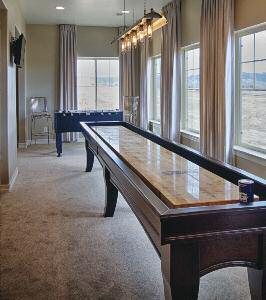
Photo by Wendy Gedack
is a neon beer sign, well, that may present more of a challenge than a deer head or an autographed jersey, but you can definitely pull it off. Even if you don’t have that one off-the-wall detail to work with, in an ideal situation you like to start a Man Cave with a focal point—a pool table, a fantastic piece of furniture, a large collectible item—that’s Design 101. More often than not, however, your client just says, “Just create a space that blows me away.”

Photo by Wendy Gedack
In those cases, again, it’s important to listen. You’re trying to find a way to bring his things and her things together in a space, especially if the Man Cave is a place that a couple is going to share and entertain in. Recently I had clients where the husband and wife were both Starbucks executives. He grew up on a farm in Minnesota. She was a city girl from Chicago. He wanted warm tones and lots of wood. She liked glass and steel and cool colors, and really disliked wood.
Immediately, I knew I had to figure out what they both liked. In our discussions, it turned out she was very focused on her wine collection, and was keen on having some sort of storage configuration in their dining room. At the same time, he liked sports but his Man Cave didn’t have to be full of Broncos memorabilia. He just wanted a really cool, refined space—”a place where I can smoke a cigar, have a mug of beer and enjoy the space.” I ended up using two basement storage areas to create a wine grotto. It had the wood that he wanted and enabled her to show off her collection in a space they were both comfortable in. He feels good about it because he can have his buddies over, and she’s happy because the shelves we built were tilted at 45 degrees so that people could see the labels of the wine bottles.
Of course, not everyone can afford to hire an interior designer to plan out a Man Cave. If you are tackling this project yourself, there are a few rules of thumb. Limit yourself to two or three colors. Ideally, carry through the main color of your house into the space, and pick one or two others. If one of those colors is a bright team or school color, that may present a challenge—but also an opportunity. For the “NFL Female” Super Bowl Party, I purchased a black and white cowhide, Googled “chalk paint by Annie Sloan” and found a local stockist who painted it orange crush and blue (see below) and it really pulled the room together. Another way to get continuity with the rest of your home is in the matting and framing of photos and collectibles.
Most importantly, re-read the beginning of this article. It’s critical to get on the same page as your spouse. Understand what’s important and what’s not, and pick your battles wisely. You’ll end up with a space you’ll both be happy with.
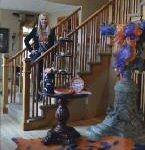
Photo by Elizabeth de Sordi
Editor’s Note: Stacy Ewing runs Stacy Ewing Interiors & Design in Denver. The company works from concept through completion for a wide range of residential, commercial and hospitality projects. Stacy has designed Man Caves for six residential clients in recent years. Many of her past and current projects can be viewed at stacyewinginteriors.com.
Amuse
39 Elm Street, Westfield. Phone: 908.317.2640
Open for lunch Monday through Saturday from noon to 3 p.m. and Sundays for brunch from 11 a.m. to 3 p.m. Dinner, Monday through Thursday from 5 to 9 p.m., Friday and Saturday from 5 to 10 p.m. and Sunday from 5 to 8 p.m. BYOB.
Dress ranges from smart casual to festive. Prices: Soups and appetizers: $8 to $24. Entrees: $20 to $42. Desserts: $8. Major credit cards accepted.
Roasted bone marrow doesn’t need to shout. Its slithery texture, its unabashed tout of fat, its sturdy boat of a bone as conduit is so dominant a presence on a plate and on a menu that, without a word spoken, “French bistro” is conveyed.
Amuse, a spanking new French bistro in downtown Westfield, has bone marrow on the list of starters on its menu and it pops out at diners. Even before you see foie gras, steak tartare, escargot and frisee, your eyes light on “roasted bone marrow (with) sea salt, red onion marmalade, toast.” It’s so proper, it’s so right.
It’s also not surprising, for Amuse is the down-to-earth confection of Chez Catherine veteran C.J. Reycraft. A casual counterpart to the formality of Westfield’s longtime French fine-dining fortress, Amuse is new-school bistro, cheerfully decked in blond wood tables and chairs, with a handful of booths lining a rear wall and a modern “chandelier” that serves as a playful spoof to dripping candelabra.
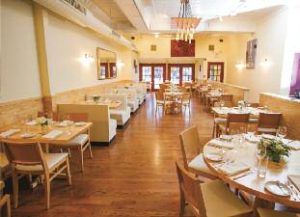
Photo credit: Manny Carabel/MTC Photography
Amuse is Reycraft’s personal statement, a way of saying “bon appetit” without sounding haughty. It’s French bistro with an American look—clean-cut white tableware and linens, paned doors that serve as windows opening out onto the street, artwork in small doses. It’s a look that’s spare and calm, no frills, no ruffles, no fuss.
The food doesn’t appear fussed over, but it is carefully prepared. That bone marrow, stately and imposing with a pair of bones pitched in a cross formation on a stark white plate, comes with a riveting red onion marmalade that, rich and succulent as it is, actually serves to tame the silky marrow. Slather both atop the toast, then sprinkle with sea salt and understand why classics come to be: Some things are just too delicious to go out of style.
The frisee salad, topped by a perfectly poached duck egg, smoky-meaty lardons and crisp croutons, was spot-on. Poke open the yolk of the egg to let it ooze atop the bitter greens and lardons, then toss the lot into the Champagne vinaigrette. Super-size that salad and call it lunch. Or a post-theater midnight supper.
Reycraft’s foie gras is seared and served with brioche and a vanilla-licked pear compote that didn’t even approach sweet. The pear, just shy of ripe, was astringent enough to dial down the inherent hyper-richness of the fattened liver, and a flash of almonds brought crunch to every bite. Texture, in the right places and in the right doses, is something a smart chef understands.
Cashews brought that same touch to the mild ricotta-stuffed ravioli dressed in brown butter. The happy surprise here was a hint of tart-sweetness coming from a quick spray of chopped cranberries. I love dining out for such ah-ha moments: Why not just a touch, the barest touch of dried fruit with that pocket of cheese-filled pasta? It made the dish taste finished, complete and, ultimately, special.
A dining companion was tickled to find beech mushrooms perched on the plate of duck confit and butternut squash puree with a sprinkling of dried cherries. She loved seeing these creamy-tasting wild mushrooms she’s acquainted with from her native Japanese cookery, while I was just as happy to find them a yin to the yang of the preserved duck leg and thigh’s crackling skin that yielded to tender and intensely flavored meat. Too often, residual salt mars duck confit, but not here at Amuse.
The seared sea scallops, however, were seriously oversalted, as if someone in the kitchen had generously salted them and then another chef had unknowingly salted them a second time. The promising accents—hazelnuts and raisins, capers and browned butter—were obscured by the salt. We lapped up the sides of buttery pureed parsnip and Brussels sprouts as a cleanse.
The steak frites triumphed. Hard-fought simplicity is what this classic of beef-and-fries is about and Amuse’s take—employing a chewy, deeply beefy skirt steak, a hip-yet-comforting choron sauce and, for a kick, kohlrabi—is plain old cooked-to-a-T fun.
If you’re all about high-art desserts presented as high-wire acts that demand surgical tools to merely approach, Amuse’s finales may disappoint. I loved them, particularly a banana pudding so custardy that it made me wonder just what the ratio of bananas to eggs was in this pudding. Factor in a chocolate cookie crumble of a crust and you’ve got a very grand finale. A pair of tarts can’t be considered also-rans: The chocolate tart, lined with caramel and finished with a layer of dark ganache, came with a dollop of passionfruit ice cream that reined in the richness of the confection. The lemon tart, with a textbook-true lemon curd at its core, was paired with a snappy raspberry sorbet. Again, balance. Again, impressive.
Amuse charms with its unassuming style, devotion to classics that deserve the title and sophisticated home-spun character. Too often, chefs who lack experience and confidence feel the need to riff on classics in a way that deprives them of their soul. Chef Reycraft takes liberties, but only in ways that elevate the dishes. That’s a chef with a clear vision and the chops to see it through from concept to kitchen to table.
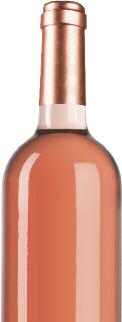 Wine Times
Wine Times
Amuse, very much a French bistro, is a BYOB. This means you should not tote along mass-manufactured bottles from the New World. Save Barefoot, Yellowtail and Cupcake for another time. (Though, frankly, I wouldn’t wish another time of that kind on anyone.) Amuse deserves a wine not so much from the trophy zones of Burgundy and Bordeaux, but rather the Languedoc, the Loire and the southern Rhone Valley of France. Since rose season is upon us, spring for a Provencal rosé—or, for typically less cost, one from Nimes. What you want is a true bistro wine that goes with a good variety of dishes. Carignan, anyone? Yes, if it’s from a good producer in the Languedoc. A Grenache blanc blend? Now you’ve got the right idea.
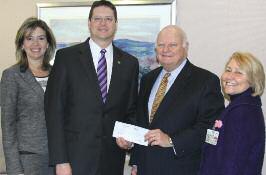 CHECKING IN ON FUTURE HEALTH PROFESSIONALS
CHECKING IN ON FUTURE HEALTH PROFESSIONALS
High school students benefit from funding given by the TD Bank Foundation that supports the Health Careers Exploration program coordinated through Volunteer Services at Trinitas. TD Bank’s Beatrice Romao, Retail Marketing Manager (left), and Martin P. Melilli, Regional Vice President, Union-East Essex Lending (second from left), visited Trinitas to present the bank’s latest grant to Gary S. Horan, FACHE, President and CEO, and Nadine Brechner, Chief Development Officer and Vice President of the Trinitas Health Foundation.
 BOOSTING NURSING SCHOLARS
BOOSTING NURSING SCHOLARS
The Northfield Bank Foundation supports the Trinitas Nursing Scholarship Program through generous grants that subsidize tuition needs of undergraduate and graduate degree candidates at the College of Saint Elizabeth which partners with Trinitas in this education effort. Nadine Brechner, Chief Development Officer and Vice President of the Trinitas Health Foundation (left), and Gary S. Horan, FACHE, President and CEO, gratefully accepted the Northfield Bank Foundation’s check recently from Diane Senerchia, Executive Director (second from left), and Jean Ringhoff, Vice President, Business Development Officer.
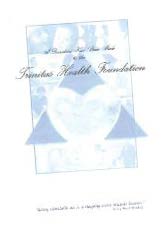 A GIFT WORTH GIVING
A GIFT WORTH GIVING
In this world of instant messaging, you can tell those you know and love how important they are to you in a way that will have them texting and tweeting.
Honor someone special today with your tribute gift to the Trinitas Health Foundation. A note announcing your meaningful gift will be sent to your honoree or to their family letting them know of your thoughtful contribution.
For more information, please call the Trinitas Health Foundation at (908) 994-8249.
Every trinket tells a story.
You might say I live a charmed life. Yes, life is good for the most part, but that’s not what I’m talking about. Over the years, I have been the recipient—and sometime purchaser—of dozens of charms. In contrast to T.S. Eliot’s J. Alfred Prufrock, who measured the banality of his life in coffee spoons, I can trace much positive meaning in my life from each of the charms I’ve acquired. It’s weird that these inanimate objects, the charms, have come to represent my life, my family, my friends and my spiritual beliefs.
The hodge-podge doesn’t look bad. When I jingle past the jewelry cases at Bergdorf Goodman, more often than not, I am stopped by a shop girl asking, “Where did you get those necklaces?” as though a designer had created the look. The collection has grown to five separate necklaces and, to be succinct, I explain that it’s a compilation of good luck charms I’ve been given over the years.
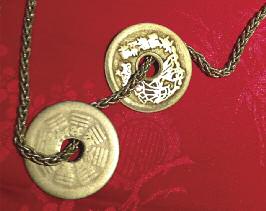 The saga of this collection started decades ago, in my early 20s, when I was working overseas at the Asian Wall Street Journal and studying Mandarin with a Chinese sage who, locals believed, could tell the past, present and future. People from all over Asia sought him out to help them with decisions big and small—where to bury an ancestor, which boyfriend to favor, whether a potential business partner was trustworthy. When I decided to return to the states, a fellow language student presented me with a Chinese coin. Not an old round one with a square hole in the center, like old Chinese money. No, it was a token for good luck, with the eight trigrams of the I Ching on it. The sage had suggested she give it to me to enhance my luck. I never considered myself superstitious—no rabbit’s paws, evil eyes or four-leaf clovers for me—yet, I put the token on a red string and wore it on my wrist. Over time, the sage gave me another Chinese token with Taoist writing on it, so it joined the other coin. Fine, two coins…
The saga of this collection started decades ago, in my early 20s, when I was working overseas at the Asian Wall Street Journal and studying Mandarin with a Chinese sage who, locals believed, could tell the past, present and future. People from all over Asia sought him out to help them with decisions big and small—where to bury an ancestor, which boyfriend to favor, whether a potential business partner was trustworthy. When I decided to return to the states, a fellow language student presented me with a Chinese coin. Not an old round one with a square hole in the center, like old Chinese money. No, it was a token for good luck, with the eight trigrams of the I Ching on it. The sage had suggested she give it to me to enhance my luck. I never considered myself superstitious—no rabbit’s paws, evil eyes or four-leaf clovers for me—yet, I put the token on a red string and wore it on my wrist. Over time, the sage gave me another Chinese token with Taoist writing on it, so it joined the other coin. Fine, two coins…
Now that I’m thinking about it, I do have to lay blame for the next set of charms again on the Chinese sage. This time he was in New York enjoying a Cantonese feast with some Chinese beauties and they were discussing what Chinese animal complemented their birth years. This complementary animal can be used for anything from finding a mate to merely bestowing luck. The sage explained there are two ways to discern fortuitous animals. First there was the best animal match for their birth animal. I’m born in the year of the Dragon so those born in the year of the Rooster are best partners. Then there is a more mystical match system called the Three Harmonies, which identifies the animals that are four years before and four years after your birth year. So the Rat and the Monkey create a sort of sacred triangle with the Dragon. You follow me? As the Chinese beauties were discussing whether to get porcelain, jade or stuffed animals to decorate their homes, I thought No tchotchkes for me, hey I like gold, and what could be more auspicious than to constantly wear the symbols of harmony?
Finding those animals was no easy feat, as charms were not in fashion in the early 1980s. Eventually, I located a gold rat, monkey and rooster; my mother bought me a gold chain necklace and had a jeweler attach the charms and, voila, I’m a lucky girl! (Fast forward, I happened to marry a “rat,” our son is a “monkey,” and our daughter was due in the year of the rooster, but was born three months early in the year of the monkey…all further blessing my life.) Meanwhile, I bought a gold chain to hang the original Chinese good luck tokens.
The next additions—a heart and moneybag, which I attached to an old watch chain—came from a co-partner in a New York restaurant. She wanted to make sure we all were blessed with good luck. For the record, the restaurant thrived until the manager got greedy and we decided to close rather than deal with his crooked ways. Still, we made a profit.
My neck was becoming encircled with charms of whimsy, superstition and serendipity. The next ones were spiritual. When I married my rat in 1985, the Chinese sage arrived at the chapel in New York and presented me with a huge red macramé necklace with a Tibetan Buddha hanging at the end. It really didn’t go with my grandmother’s 1912 Edwardian couturier gown, but how could I refuse? He put it over my head, as if he were knighting me, and I tried to discretely tuck it under the décolletage. All was good: the wedding went off with out a hitch, eventually the macramé disintegrated, and I’m still married to the same rat. Now the Buddha charm hangs from the chain necklace with the auspicious animals, balanced by a jade Buddha from Hong Kong.
The next spiritual addition was a “miraculous” medal. Sixteen years ago, my husband developed an aneurysm in an artery that wraps around his brain stem. Many of our friends sought to provide help and comfort. Besides having a leading neurosurgeon operate, it was an ecumenical effort with monks, nuns, swamis, rabbis and priests of all faiths praying. After successful surgery, I was talking to a friend about the power of faith, no matter what the religion, and he mentioned he had Mother Theresa’s nuns praying for my husband. He gave me a tin medallion of the Virgin Mary, which had actually been blessed by Mother Theresa—which I added to another chain, as I admired Mother Theresa’s good works. The fact that, when the medallion’s attaching loop broke I had the medallion encased in gold, speaks to the deep admiration I have of Mother Theresa’s selfless good deeds.
I cannot attest to any miracles per se, but the medal has helped open doors to amazing friendships and instant goodwill from the few who recognized its spiritual significance: The niece of the French nun who, after dreaming the Virgin Mary instructed her, designed the medal; and an art historian with whom I have spent many hours in discussions of existence and spirituality. Being with them is a celebration of life and our higher selves. Were it not for the medal, we would have never discovered our commonality. I have since introduced them to each other.
I also wear charms on my wrist. These change according to the Chinese New Years. 2014 is the year of the Horse, so to ensure an auspicious year, I will wear a complementary Ram charm and harmonious Dog and Tiger charms.
To round out the spirituality—as I am ecumenical and believe all religions offer a deep wisdom—I added a Star of David, a crescent moon and star, my children gave me a St. Christopher’s medal, and my son gave me a Lama-blessed Buddha charm he purchased while hiking in Ladakh, India. I also have a blue topaz flower charm designed by a friend (I love gardening) and a tin Eiffel tower (I love Paris) assembled in a mish-mash from a long watch chain I bought as a home for the new additions.
My charms are markers of my life’s journey, as well as expressions of my hope for peace and belief in human commonality.
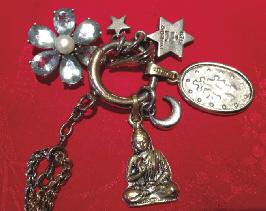
Beijing after 30 years for EDGE. Some charms, Sarah admits, have proved to be problematic—like the double-swastika charms that the Chinese sage gave to her. The swastika for over a millennium has been a potent Buddhist symbol, which unfortunately was adopted—backwards—by the Nazis. “Should I arrive unconscious at a hospital,” she says, “it might test any doctor’s Hippocratic oath to save my life.”
Editor’s Note: Sarah Rossbach speaks Mandarin, has traveled extensively in Asia and published several books on Feng Shui. In 2013, she wrote about a return trip to
Unusual pets demand something more than the usual commitment.
Americans love their pets. Pet ownership in the United States has more than tripled since the 1970s—when approximately 67 million households had pets—to 2012, when that figure climbed to 164 million, according to The Humane Society of the United States. Cats remain the most popular pet in the U.S., with Americans owning more than 86 million felines. The number of pet dogs totals more than 78 million. What about the more unusual critters—exotic birds, tropical fish, rabbits, ferrets, and reptiles? We may not hear about them as much or see them featured in pet food commercials, but they have just as devoted a following as our beloved cats and dogs.
If you’re thinking about owning an exotic pet, you need to do your homework. Speak with someone who owns one, or a veterinarian who treats exotic animals. Whether it’s a parrot, a lizard, a rabbit, or a rat, each of them has its quirks and special needs.
It is also important to know state law. In New Jersey, it is unlawful for persons to possess a potentially dangerous species as a pet. Potentially dangerous species include the following orders: Primates; Carnivora (nondomestic dogs and cats, bears); Saura (venomous gila monsters); Serpentes (venomous coral snakes, cobras, vipers, pit vipers); Crocodilia (alligators, crocodiles, gavials); Psittaciformes (ring-necked and monk parakeets); and Rodentia (prairie dogs, ground squirrels). The law makes an exception for zoos and other exhibitors. They may possess these animals upon showing that specific criteria have been met, such as extensive experience in handling and caring for the animal.
“The best advice I can give anyone seeking to own an exotic pet is to research that pet extensively,” says Dr. Abe Van Beveren, a veterinarian who specializes in exotic pet medicine and surgery at Eagle Rock Veterinary Hospital in West Orange. “Are you able to provide the proper environment for your pet? Is it a social animal, such as a ferret, or more solitary, such as a skunk? Are you aware of the time commitment involved?”
People who fail to educate themselves, he adds, are often surprised and annoyed at pet behaviors that are common to a particular species. “Someone will come in and say, ‘My bird is very loud and it’s annoying when I am trying to talk on the phone.’ Well, you bought a macaw, a bird whose call can be heard for miles in the wild. You really need to research a particular pet’s habits to see if they are a good fit for you and your family.”
FOOD FOR THOUGHT
Exotic pet owners should also be aware that the care and feeding of their pets can be costly. Many vets will charge higher fees for exotics. And, many exotics are prone to specific diseases, such as ferrets, which are predisposed to a variety of cancers, the treatment for which can be expensive.
Max Leichman of Montclair worked at an aquarium store called Absolutely Fish when he first became interested in tropical fish and reptiles. He keeps several exotic fish, including dwarf puffers, a rainbow shark, a large corydoras catfish, buffalo heads, and a spiny peacock eel. “The most important thing is to keep the tanks clean,” he says. “I clean the tanks once a month and the filter three weeks after cleaning the tank. I feed my fish twice a day which actually causes them to grow a little more quickly.”
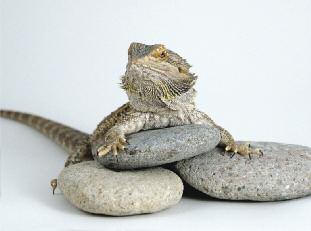
Photo credit: New York Film Academy
Exotic fish are prized for their exquisite beauty and can provide hours of enjoyment, but pet owners need to learn about the proper aquariums, the right kind of food for different types of fish, which fish can co-exist with one another and which cannot, and the types of plants to buy to help control the nitrogen cycle, where toxic compounds are released into the water by waste products produced by the fish. Your $1,000 reef tank could turn into the Arthur Kill if you take your eye off the ball.
Reptiles and amphibians are other popular pet choices but, as with tropical fish, they are not low-maintenance. “Bearded dragons [pogonas] are a best choice for your first-time owner,” Leichman believes. “You do need to stay on top of cleaning their enclosure, misting them at least twice or three times a day to make sure they stay hydrated, have enough food, and that they are eating. You also need to have a heat lamp that stays on around the clock and a light that you leave on during the day for them to bask in.”
Each type of reptile or amphibian has its own particular set of needs when it comes to living space, air temperature, and food. Whiptail lizards, for example, are very active and can cover a lot of space. The larger ones require a 75-gallon aquarium. They also need a basking area in their tank that reaches 110 to 115 degrees Fahrenheit. And, since they’re diurnal (active during the day), it needs full spectrum UVB lighting for 10 to 12 hours each day.

Photo credit: iStockphoto/Thinkstock
WINGING IT
If you are planning to own exotic birds as pets, it pays to have the patience of Saint Francis. Cheryl Silva, a graphic designer who grew up in East Brunswick, has several exotic birds: five parrots—including a lovebird, two cockatiels, a Goffin’s cockatoo and a military macaw—along with two doves.
Many people, she points out, are unaware that parrots need a lot more attention than a cat or a dog. “They need time out of their cages, but you need to parrot-proof your home since they can get into things,” says Silva. “They are intelligent creatures that need stimulation and challenging toys when kept in their enclosures.”
If they are not provided with these things, she adds, they can mutilate themselves or destroy things in your home. Silva advises anyone who is thinking of getting a parrot to read up on them and start with a small one first, such as parakeet or cockatiel. Apartment dwellers should also check their leases to see if there is a pet clause that prohibits noisy birds.
Dan Radzik, a realtor from Metuchen, deals with rare bird rescue. He became interested in parrots when he found his first neglected bird, a timneh, while he was listing a house for sale. He currently has around 35 parrots in his rescue, Lonely Grey Rescue, including a calico macaw, a Solomon Island eclectus, a Congo African grey, a yellow-naped Amazon, a white-bellied caique, a Fischer’s lovebird, and two Moluccan cockatoos. “Everything about owning a parrot is challenging, from learning to read their body language so you don’t get bitten, to getting to know thier likes and dislikes, to maintaining them on a healthy—and often expensive—diet,” he says. “You also need to have the proper lighting system, make sure that your bird receives all of the nutrients and vitamins he needs, continuously replace toys or involve him in activities to keep him stimulated.”
FERRETS & RATS
Tamara von Ouhl-Kremer, a teacher from Red Bank, has been operating a ferret rescue for about 30 years. She currently has 15 ferrets in her rescue, Concerned Ferret Owners. While ferrets can make great pets, she underscores that they are not for everyone. “Ferrets are very social, active animals,” she explains. “Most young ones can play rough, as their skin is tough, but they have to learn that their owner’s skin is not as resilient. They can be rambunctious and get into mischief, opening cabinets, stealing items, and climbing up onto things, but not being able to get down.”

Photo credit: iStockphoto/Thinkstock
They also require a special high-protein diet and their veterinary bills can be expensive, she says, adding that outside play is not recommended for ferrets as they do not like wearing a leash or collar and there is always the possibility of them running off and being attacked by predators.
Mention rats to most people and they will turn up their noses. But they, too, have their fans. Destiny C. Sweet of Phillipsburg thinks they make great pets as they are affectionate and social animals. She currently owns an albino rat, the kind used in many research laboratories, named Clyde and a tan hooded rat called Arthur. She keeps the two separate because of Arthur’s aggressive behavior towards Clyde. Caring for rats, according to Sweet, involves frequent cage and food bowl cleaning. “Lice are also very common in pet rats and they can be difficult to eliminate,” she says. “The best suggestion is to bleach the cage and everything in it and also use a special shampoo to bathe the rats.”
Along with special pellets and lean meats, rats love fruits and vegetables, pasta (including raw pasta), and crackers. Sweet also recommends that you provide them with something to chew on, such as cardboard. “It’s not good to let their teeth grow too long,” she says. “They need to chew to keep their teeth filed.” Rats are prone to an upper respiratory infection called mycoplasma respiratory disease, Sweet adds. Mycoplasma is an organism that rats (and other rodents) are born with that can become activated by stress or environmental factors. It can be controlled with medication, however. Rats kept in cages with wire flooring can also be prone to bumble foot, a bacterial infection caused by an inflammatory reaction on the feet. For this reason, wire flooring is not recommended.
RABBIT ERAS
Jen Holsman of Belleville, a digital image coordinator, has had a fondness for rabbits ever since she was a child. She is the proud owner of Pumpkin Spice, an English Spot rabbit, who “loves playing in her homemade tunnels, romping around the playfully nudging, digging, and doing crazy bunny ‘binkies.’” Binkies refers to the bunny jumping into the air and twisting its head and body in opposite directions before falling back to the ground. It indicates that the rabbit is happy and feeling secure.
Holsman says the single most important thing to know about rabbits is that they are a 10-plus-year commitment and are social creatures. “They need attention and socialization,” she says. “They are also domestic and therefore cannot survive in the wild. Releasing them would be a certain death sentence.”

Photo credit: iStockphoto/Thinkstock
Rabbits need indoor shelter to survive, preferably an exercise pen where they can run, Holsman adds. The good news is that most rabbits, like cats, can be litter-trained. “Interaction is not only important for them emotionally, but the more time you spend with your bunnies, the better you know their behavioral tendencies, making it easier to identify any potential health problems or variations from the norm.”
These animals have extremely sensitive digestive systems and are prone to gastrointestinal stasis, which is essentially a stoppage in their intestinal function. “If your rabbit refuses to eat, drink, or relieve itself, get it to a vet immediately,” she warns. “A few short hours can be the difference between life and death.”
Editor’s Note: A good starting point for information on exotic pets are the various clubs, web sites and social media pages devoted to them, such as NJ Ferret Rescue & Sanctuary, Turtles and Tortoises, Reptilecare, Birdchannel and Fishlore.
Keeping Things Personal
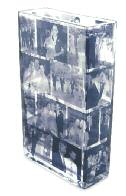 PICTURE THIS
PICTURE THIS
The best memories stem from pictures when you have the custom-made brick Memory Vase. Available at uncommongoods.com.
 SWEET TALK
SWEET TALK
The custom chocolate assortment from Totally Chocolate can say whatever you like to whomever you love.
Available at totallychocolate.com.
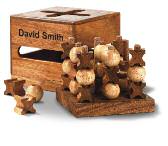 X’S & O’S
X’S & O’S
Game theory never looked better than engrave-able 3D Tic Tac Toe. Available at gifttree.com.

COUPLES THERAPY
Couples will feel great about themselves when they share the Famous Couples Throw Pillow with some truly significant others. Available at redenvelope.com.
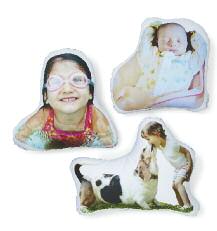 PILLOW TALK
PILLOW TALK
Send your favorite photos to Ronda J. Smith and a few weeks later you’ve got custom-sewn plush Picture Your Baby Pillows. Available at uncommongoods.com.
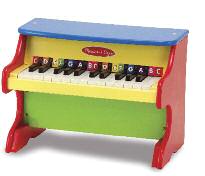 IN THE KEY OF ME
IN THE KEY OF ME
The toddler in your life can start making a name for him/herself with the personalized Learn to Play Piano. Available at melissaanddoug.com.
Pet Projects
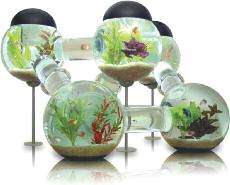 SUPER BOWL
SUPER BOWL
Your fish will have almost as much fun as you do with the Labyrinth Aquarium. Available at opulentitems.com..
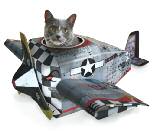 FLYAWAY HOME
FLYAWAY HOME
Your feline friend will have hours of fun (okay—minutes of fun) in this Airplane Cat House, modeled after a WWII P-47. Available at uncommongoods.com.
 SCRATCHIN’
SCRATCHIN’
Can’t afford a DJ at your next party? The Paws the Music cat scratching pad turns kitty into a party animal. Available at modcloth.com.
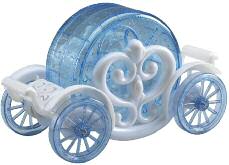 GOING COACH
GOING COACH
Give your rodent a first-class ride with the Super Dazzle Hamster Exercise Carriage. Available at wag.com.
 OUR TOWN
OUR TOWN
Your puppy will be proud to display its NJ heritage with the custom Doggy Tee. Available at cafepress.com.
Watches with an EDGE
FIT FOR A KING
Classic styling with a fresh, casual feel make the Royal Oak Offshore Chronograph a true standout timepiece. Available at audemarspiguet.com.
ALL THAT GLITTERS
A gold-sprinkled dial with the iconic signature dot helps the Movado Bold Glitter Watch stand out in a crowd. Available at nordstrom.com.
NUMBERS GAME
Keep your eye on the hands, not the numbers, of the What Time? Watch from Rakani. Available at rakani.com.
LINE ITEM
The Ora Unica Watch, by Denis Guidone for Nava Design, tells time with the ends of the signature squiggle. Available at shop.walkerart.org.
PETAL TO THE METAL
The diamond-studded mother of pearl Floral Watch features Art Deco styling and an interchangeable strap. Available at michele.com.
FAIR & SQUARE
The rugged men’s Block Watch is stamped in squared-off brass surrounding a circular face. Available at shop.walkerart.org.
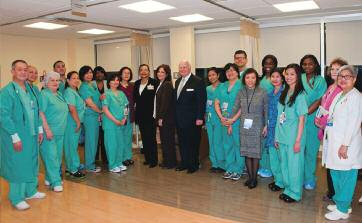 OPEN FOR BUSINESS
OPEN FOR BUSINESS
Trinitas President & CEO Gary S. Horan presides over the ribbon-cutting for the new Ambulatory Surgery Center. Elizabeth Mayor Chris Bollwage does the honors along with
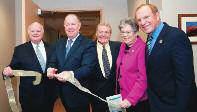
(l to r) TRMC Vice-Chairman Victor Richel, Chairperson Sister Rosemary Moynihan and NJ Sen. Raymond Lesniak. Surgical team members from the hospital’s existing operating room services will staff the $5.2 million facility.
 STOUTHEARTED MEN
STOUTHEARTED MEN
The January 2014 class of the Trinitas School of Nursing included a record number of 20 men among the 89 graduates awarded their diplomas and their Associate degrees. This is the largest number of male graduates in the school’s 123-year history. The multiethnic program is recognized as one of the largest nursing schools in the nation.
 THE RIGHT PRESCRIPTION
THE RIGHT PRESCRIPTION
The Bergen Pharmacy has opened a new convenient location to serve patients at Trinitas in the lobby of the Medical Office Building at the Williamson Street Campus. Nancy DiLiegro, FACHE, PhD, Vice President of Clinical Operations and Physicians Services, and Chief Clinical Officer (right), welcomed Pharmacist-in-charge Nirav Halani, RPh, and Pharmacy Technician Amelia Nieto.
 TOUCHDOWN!
TOUCHDOWN!
With parents Patti and John Dougherty of Summit, Colm Dougherty, a linebacker, running back, team captain, and MVP for the Hilltoppers, was named to the New Jersey Football Coaches Association Super 100 team of the Top 100 players in the state. The team’s leading tackler with an impressive 102, Colm ran the ball 160 times to gain 1,267 yards. With 22 touchdowns to his credit in the 2013 season, the 17 year old senior heads off to the gridiron at Gettysburg College in September. John Dougherty is Director of Security at Trinitas.
 REFRESHER COURSE
REFRESHER COURSE
Staff from Trinitas’ Institute of Healthcare and Community Education visited the Roselle School District to conduct CPR training for the district’s athletic coaches, health/physical education teachers, nurses, security guards and custodians. Trinitas staff members contributed to the knowledge base of those who attended the program.
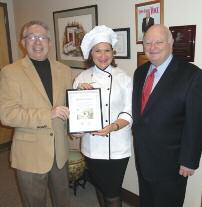 HAIL TO THE CHEF!
HAIL TO THE CHEF!
Orietta Rodriguez, Executive Assistant to Gary S. Horan, President and CEO (right), received thanks and a plaque from Ken Richuso, Chairman of the Elizabeth Rotary’s 2013 Taste of Elizabeth, for her menu offerings during the food tasting event.
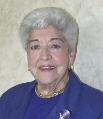 PASSING OF A “DYNAMO”
PASSING OF A “DYNAMO”
Trinitas lost one of its most devoted and tireless Auxilians in January when Liz Weishapl of Union passed away following a brief illness. Serving as an Auxilian for nearly 40 years, first with the St. Elizabeth Hospital Guild and then with Trinitas, Liz was a valuable asset to both organizations. From service as Auxiliary President, to arranging vendor sales and participating in numerous special events, Liz was dedicated and generous of spirit.
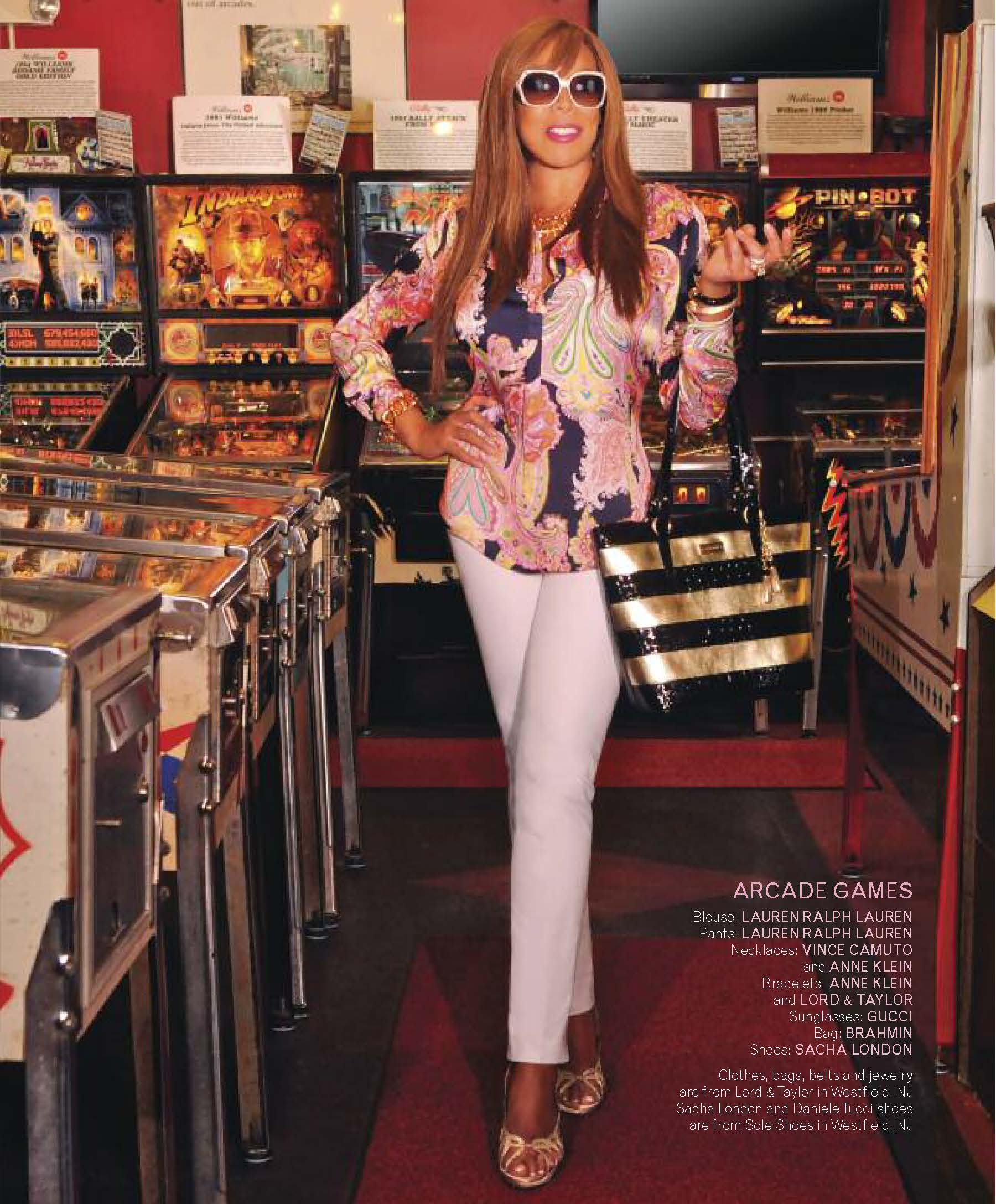




News, views and insights on maintaining a healthy edge.
 Happy Days
Happy Days
A recent study out of University College in London has shed some light on why everyday physical activities are more difficult for some seniors than it is for others. Happiness may make the difference. People over 60 who considered themselves to be unhappy or dissatisfied with life were 80 percent more likely to have problems preparing food, bathing and dressing. The study followed more than 3,000 people over an eight-year period. Only about 4 percent of the people who said they enjoy life had problems with basic tasks.
 Patient, Heal Thyself
Patient, Heal Thyself
The goal of employing stem cells to grow new organs for transplant has hit a number of snags, most notably that it requires either harvesting of cells from embryos, or manipulating DNA. Scientists in Japan may be on to a clever shortcut that does not involve either of these methods. Researchers at RIKEN, the nation’s largest research institution, found that soaking normal blood cells in a mild acid bath caused them to “revert” back to pluripotent stem cells. These new cells were injected into mice brains, hearts and other organs and proved adept at transforming themselves into regular cells. This surprising “shortcut” suggests that patients could one day produce their own stem cells on an as-needed basis.
 Crisp Reminder
Crisp Reminder
Americans consume a billion-and-a-half pounds of bacon each year. “You may be surprised to learn that in the healthcare setting, bacon is a favorite menu item,” reports

Michelle Ali, RD
Director, Food and Nutrition, Trinitas Regional Medical Center 908.994.5396
Michelle Ali, RD, Director of Food and Nutrition at Trinitas. “Bacon is not just a favorite of our patients, but also of our staff—so much so that bacon is in the Top 10 foods purchased on a regular basis for Trinitas.” That probably wouldn’t come as a surprise to those who were part of Bacon Week, a festival held at the Tropicana Casino in Atlantic City this past February, just one of about two dozen similar events scheduled to be held around the country in 2014. Among the highlights (aka lowlights) were bacon beer, bacon vodka, bacon milkshakes, bacon cupcakes, bacon cologne, bacon toothpaste, and bacon floss. Ali explains that bacon enjoys high marks for two reasons: fat and salt. “Fat is integral to the flavor and texture of bacon. The role of salt is as a preservative added during the brining process, otherwise known as curing.” When you combine these factors—high saturated fat and high sodium content—Ali recommends that it’s best to eat bacon in moderation. In other words, remember to eat healthy and don’t pig out.
 Where There’s Smoke…
Where There’s Smoke…
If you “use” cigarettes but don’t consider yourself a “smoker,” guess what? A) You’re not alone and, B) you’re not doing yourself any favors. A recent article in Tobacco Control cited a recent study in California that looked at two groups of “non-identifying” smokers—people who smoke at least once a month, but don’t think of themselves as smokers. One group consisted of older adults who quit smoking in the past, but still indulge in the occasional cigarette. The other group was made up primarily of people in their 20s and 30s who smoke “socially” but do not believe they are addicted to nicotine. Incredibly, 22 percent of non-identifying smokers actually admitted they smoke at least once a day. Researchers are drawing some troubling conclusions. For example, the number of people who do not identify themselves as smokers in health-related surveys may throw off the data. Also, smokers who don’t think of themselves as such are unlikely to avail themselves of quitting strategies, and thus run the risk of getting hooked on cigarettes. Why is the number of non-identifying smokers so much greater than previous estimates? As smokers become more marginalized, they don’t want to admit they are part of a socially unacceptable group. The Surgeon General recently added diabetes, colorectal cancer, liver cancer, and erectile dysfunction to the long list of smoking’s list of diseases and health problems.
 The Wrong Kind of Tweeting
The Wrong Kind of Tweeting
Late last year, an Illinois man was arrested for keeping nearly 500 birds—both alive and dead—in his suburban Chicago townhouse. Besides being arrested for animal cruelty, the man was also ordered to undergo therapy for hoarding. He admitted that he had become obsessed with acquiring birds after rescuing a parakeet in 2006. Between new bird purchases and their geometric breeding practices, the situation got out of hand within a few years and he felt powerless to address it. The creepy thing was that there were more than 100 dead birds that he couldn’t bring himself to throw away. Hoarding is a debilitating mental health condition that does not always respond to psychological treatments that are effective on other obsessive-compulsive disorders—and it’s a lot more common than you’d think. According to psychologist David Tolin, author of Buried Treasures, between 2%and 5% of Americans may meet the criteria for hoarding, and rarely do their homes show outward signs of the occupant’s disorder.

Patricia Neary-Ludmer, PhD
Director, Trinitas Family Resource Center
908.276.2244
Patricia Neary-Ludmer, PhD, Director of the Trinitas Family Resource Center in Cranford, concurs. “While the outside of their homes may appear normal, the inside, in many cases, has been reduced to mere pathways,” she explains. “The individuals are paying high rents or mortgages but their living space has been reduced by upwards of 80-90% in some cases.” These circumstances are compounded by their inability to address the issue, Dr. Neary-Ludmer notes. “Making decisions on what should stay or go is very painful; when meaningful or frustrated relatives clear the possessions of hoarders, the possessions are often replenished.”
 Going Deep
Going Deep
Deep brain stimulation has been utilized with great effectiveness to treat the motor symptoms of Parkinson’s disease. Now this type of treatment is showing promise for individuals suffering from severe depression, who have not responded to antidepressant drugs or psychotherapy. According to neurologist Helen Mayberg of the Emory University School of Medicine, this treatment involves inserting electrodes to targeted areas of the brain, which are connected to a device that sends high-frequency electrical stimulation at regular intervals. The device is implanted in a patient’s chest. Ninety percent of the participants in an ongoing experiment have had positive results two years after the implantation surgery. “What we have found with patients is their psychic pain is gone with the treatment,” says Dr. Mayberg. “The constant brain stimulation takes away the profound mental suffering which allows the patient to re-train to do things they haven’t done in years.” This is far from a simple solution, she cautions, requiring a skilled team of brain-imaging specialists, neurologists, neurosurgeons, psychiatrists and psychotherapists.
When it comes to hands and shoulders, Dr. Richard Mackessy connects the dots every day.
Dr. Richard P. Mackessy, a board-certified microsurgeon, ranks among the region’s preeminent “hand guys.” Which is why he loves to talk about…shoulders. “The shoulder is the pivotal joint to the hands, so pardon the pun,” he smiles, “but they do go hand-in-hand.” Indeed, much of Dr. Mackessy’s practice actually involves shoulder issues.
And, not surprisingly, most of his shoulder surgeries involve the rotator cuff. That being said, he has also performed more extensive shoulder surgery, mainly in the 60 to 65 age group.

Photo credit: iStockphoto/Thinkstock
Yet, at the end of the day, Dr. Mackessy is a board-certified hand surgeon, and that is where his passion lies.
Carpal tunnel issues predominate, especially among his patients in their 40s. Fortunately, he points out, they usually present with trauma requiring physical therapy before surgery even becomes an option. Their complaints range from difficulty opening a jar of peanut butter, to grasping a tough-to-turn doorknob, to extracting a stubborn car key. His professional advice to these patients?
“Get a special kitchen wrench for the jar situation, leave the door open, and get a car with a pushbutton start.”

Richard P. Mackessy, MD Chairman/Orthopedics, Trinitas Regional Medical Center 908.486.1111
Dr. Mackessy chose to focus on hands because that was a popular area when the time came to pick an orthopaedic subspecialty. More importantly, he felt that hands represented an opportunity to focus on microvascular techniques, thereby broadening his surgical skill set. In recent years, those techniques have been accompanied by technological leaps in surgical science.
For example, he cites Dupuytrens Disease, a seriously debilitating genetic contracture of the fingers. What used to require invasive surgery—followed by three to four months of rehab—has now been replaced by a single injection of Ziaphlex to dissolve scar tissue, with a mere two to four weeks of physical therapy. Another advance is the development of specialized plates that result in minimal impact on the patient’s daily activities for injuries such as a distal radius fracture (aka a broken wrist). And recently, a man in Denmark received a hand prosthesis that has enabled him to actually “feel” the items he touches.
In the area of shoulder repair, months of post-op recovery and cumbersome external fixators (such as casts and splints) are no longer required. Rotator cuff surgery is now arthroscopic and, in the extreme, reverse total shoulder replacements are available, much like those for knees and hips.

Leonor Gonzalez of Elizabeth who suffers chronic shoulder dislocation is one of the many patients under the care of orthopedic surgeons at Union County Orthopedic where Dr. Richard Mackessy practices. Physical Therapy Assistant J.L. Tracy Witter at the Trinitas Health and Rehabilitation Center guides the patient in the use of a Thera-bar to perform resisted shoulder flexion.
In analyzing his patients further, Dr. Mackessy says the younger ones typically show up after a sports-related injury and lean toward rehab. The over-35 group is ready for whatever state-of-the-art surgical solution is available to quickly solve a problem. Women, who outnumber his men patients, are typically more circumspect and weigh their options more carefully. Why so many female patients? “They just take better care of themselves,” he believes.
 Editors Note: Chris Gibbs pulled this assignment because she has a long history with carpal tunnel syndrome. In other words, it’s personal. Is the computer, she asked, the culprit in the rise in cases? Dr. Mackessy says the jury is still out on that connection. The same goes for texting and thumb issues. Instead he is convinced that almost everyone will suffer from some degree of rotator cuff or carpal or other hand damage once they reach a certain age—through the normal wear and tear of everyday life.
Editors Note: Chris Gibbs pulled this assignment because she has a long history with carpal tunnel syndrome. In other words, it’s personal. Is the computer, she asked, the culprit in the rise in cases? Dr. Mackessy says the jury is still out on that connection. The same goes for texting and thumb issues. Instead he is convinced that almost everyone will suffer from some degree of rotator cuff or carpal or other hand damage once they reach a certain age—through the normal wear and tear of everyday life.
New procedures are changing how we treat lung disease.
Heavy breathing is music to Carlos Remolina’s ears. No, it’s not what you think. Dr. Remolina is a man who takes breathing—all breathing—personally. As an asthma sufferer himself, he is in his third decade of practicing pulmonary medicine, treating diseases including chronic bronchitis, asthma, COPD, sleep apnea, pulmonary emphysema, lung cancer, pleural effusions, and other conditions. At Trinitas, Dr. Remolina is breathing new life into his field with procedures that are slashing the length of hospital stays, streamlining procedures and improving patient outcomes, and, of course, saving lives.

Photo credit: iStockphoto/Thinkstock
“It’s very important to me to make a diagnosis as early as possible to save a patient from having to undergo a major surgical procedure,” he says. “So the fact that we’re able to be on the cutting-edge and perform the procedures that are only being done in major medical centers is very rewarding.”
Dr. Remolina’s latest groundbreaking procedures is what he refers to as EBUS: an endobronchial ultrasound. “We can go right to a mass and then an ultrasound allows us to get inside the tumor itself and access areas of the lung we never could,” he says. By performing a bronchoscopy with the help of an ultrasound, he explains, patients need only undergo one procedure that will allow his team to diagnose and treat a bronchial condition—saving them from having to pay a visit to a surgeon and await the results of a biopsy. “The value of this procedure is that now not only can we make a diagnosis of cancer, but we can also stage it—we’ll know right away if the cancer is too advanced to operate and what the most effective method of treatment will be.”
Anyone admitted to Trintias in need of an endobronchial valve treatment can also rest assured that Dr. Remolina will spare them from unnecessary, painful surgeries; his endobronchial valve procedure enables doctors to perform a bronchoscopy and inflate a balloon to locate and stop a leak without the need for an uncomfortable chest tube insertion. “We send the patient home and six weeks later, they can come back to have the valve removed,” he says. “Hospitals are always focused on reducing the length of patient stays, so by taking away the need for patients to remain in the hospital in order for us to monitor a chest tube, we’re making it easier on the patient and preventing them from having to admit themselves for an extended hospital stay.”

Carlos Remolina, MD, FCCP, PA Chief/Pulmonary Diseases, Trinitas Regional Medical Center Director, Care One LTACH 908.241.2030
Dr. Remolina is working to ensure that the entire staff at Trinitas is trained to perform the latest in pulmonary medicine techniques. Among the hospital’s future plans, he says, is the acquisition of a navigational system that will enhance the capabilities of tools such as a bronchoscope. “It’s basically like a GPS that would allow us to find even the smallest tumor and do a biopsy,” he explains. “That way, we can detect cancer sooner and enable surgeons to operate more efficiently and with greater precision. Nobody else around here is doing what we’re doing…our ultimate goal is to provide the best pulmonary medicine in the area.” EDGE
Editor’s Note: Carlos Remolina, M.D., F.C.C.P., P.A. is board-recertified in internal medicine and pulmonary medicine. He currently serves as the division chief of pulmonary diseases at TRMC and medical director of Care One LTACH (Long Term Acute Care Hospital) at Trinitas. He completed medical school at the University of Medicine in Zaragoza, Spain before moving on to complete his residency at the New York Infirmary Hospital. Dr. Remolina completed his fellowship in pulmonary diseases at the New Jersey College of Medicine and Dentistry, Rutgers Medical School in Piscataway. His practice is located in Linden.
Who among us would be caught dead without her handbag?
To the handbag-obsessed, personal space is a moving experience. Which explains the centuries-old addiction to our purses. The handbag industry generates many tens of billions of dollars a year and, according to one survey, the average woman owns six—with an average price range of $40 to $65. At least that’s what we’re admitting to. Consumer goods guru Kellie Styring, interviewed on cnn.com recently, reported that 95 percent of women aged 18 to 64 carry a purse every day, with two or three favorites. That works out to 212 million “active” purses at any given time. As part of her study, Styring examined the contents of 100 purses and found that they housed an average of 67 items, ranging from the mundane (lipstick, phones and gum wrappers) to the highly unusual (knives, marital aids). One purse produced a summons for prostitution.
Sigmund Freud also had a thing or two to say on the subject. In his Interpretation of Dreams, he associated the purse with a female’s most personal space, her womb. So typically Freudian…but certainly the handbag can offer a peek into a woman’s id, as well as her ego. It usually contains the keys (literally and figuratively) to her routine activities (cell, wallet, checkbook and credit cards), along with more intimate clues (lipstick, supplements, and even the occasional contraceptive). On a more serious note, sometimes items are included to ensure physical safety (a mini-flashlight, a can of pepper spray, or a street-wise personal protection alarm).

Photo credit: iStockphoto/Thinkstock
Statistics and psychoanalysis aside, for all of us, the real value of our purses as personal space lies in their portability. We literally can take them with us wherever we go. And they say so much about us, too. Spill out a handbag’s contents and the owner is revealed as a clutterbug or a neatnik, young or old, wealthy or not so well off. The type (not to mention the price tag) of a handbag generates more clues as to the personality of the carrier. Is it a clutch, a sac, a hobo, a tote or a satchel?Is it worn over the shoulder, carried by hand, or even slung cross-body? Is it an animal-lover’s favorite print or a collector’s vintage item? Does it reflect the season (fur in winter, straw in summer)? Is it leather or leatherette, color-blocked or quilted? Is it a designer item, a discount store purchase or a high-grade knockoff? Is it so small it could qualify as a wallet? Or so large it might incur extra baggage fees at an airport check-in? The EDGE editorial team decided to look for some answers…
Bag Ladies
Many of us would consider it a violation of privacy were someone to peek uninvited into our purses. With the promise of anonymity, however, five New Jersey women volunteered to reveal the handbag contents they won’t leave home without.
- “I always keep two Benadryl pills in my purse since I’m allergic to bees. Unfortunately, the Epi-pen that my doctor recommended I carry with me doesn’t fit in my purse, so I keep it in my glove compartment instead…shame on me. Maybe it’s time for a bigger purse.”
- “I use my purse as a medicine bag, a food pantry, a closet, and a library. I have to tote along an inhaler for my son because he has asthma and an Epi-pen for his nut allergy. If I am away from the house, I carry snacks—healthy and nut-free of course. It’s like a repurposed diaper bag for older kids now, filled with hand sanitizers, tissues and wipes. Pre-kids, I was a wristlet/clutch carrier. One day again maybe! I love purses, but I hate carrying things. I only have boys, so it’s unlikely I can look forward to the day they have purses of their own.”
- “Not only would I never leave the house without my purse, I would never leave without my one-a-day Sudoku paperback puzzle book and a freshly sharpened #2 Mongol pencil safely tucked inside. I regularly use it to while away the time—not only at prolonged appointments, but I have even been known to whip it out when stopping for gas or standing in line at the supermarket. I think I may need a 12-step program.”
- “Stashed away and almost forgotten in whatever wallet happens to be inside my current purse is a slightly tattered St. Jude prayer card. Several years ago, while sitting in the waiting room of the hospital where my Dad was undergoing serious surgery, my concern must have been evident in my body language—so much so that an elderly lady sitting nearby came over and handed me this card. She explained that she believed St. Jude, the patron saint of desperate causes, had helped her through her own personal crisis. Without hesitation about parting with it, she said, ‘You look like you need this right now much more than I do.’ With heartfelt gratitude I thanked her and returned to my worrying. I was holding onto the prayer card when my Dad’s surgeon approached to tell me he had come through with flying colors. I thanked the doctor profusely and then sent some thanks St. Jude’s way as well. You never know.”
Unzipped
Though most people are timid when it comes to talking about contents, everyone has a handbag story to tell. A close friend had received a very personalized gift from her Tuscan father-in-law—a beautifully monogrammed shoulder bag of the palest butter-soft yellow suede—as a memento of her first visit. On a stopover in London, her husband suggested she save the Italian beauty for special occasions, but she couldn’t resist taking it with her as they ventured out in search of fish & chips. In an idyllic park-like setting, they settled upon a small food vendor who specialized in authentic newsprint funnels of crispy battered cod filets, jammed in with the quintessential twice-fried chips. Taking special care to avoid even the remotest possibility of an oily drip desecrating her handbag, my friend carefully removed it from her shoulder and placed it next to her on the park bench. Once the last of the chips had been devoured and all fingers properly licked and paper-napkined clean, she reached for her precious purse. As she reached for her handbag, she heard from above the cooing of a large pigeon with an apparent digestive issue. She glanced down just in time to see a very wet, very lethal stain spreading across the suede nap of her formerly flawless purse. There was nothing to be done. The stain resisted all attempts at removal. The bag was beyond redemption. She had lost her bag to the birds.
A lot of “lost bag” stories I’ve heard have more positive outcomes, including my own. I once forgot I had placed my purse on the roof of my car while loading it with groceries in the supermarket parking lot, and carelessly drove off. When I arrived home, I realized it was missing. I zoomed back to the market to check if anyone had turned it in to the Lost & Found. No luck. I surveyed the area around the original parking spot. No luck, either. Resigned to canceling all my credit cards, getting a new driver’s license, dealing with my lost cell phone, etc., I walked back to the car—and spotted it, still on the roof. I no longer feel ashamed of my heavy, overstuffed hobo bag. Dale Earnhardt Jr. couldn’t have moved that off the roof.
Star Gazing
Sometimes the bag itself is the story. Anna Gunn, star of TV’s Breaking Bad series, appeared on the Red Carpet at the January Screen Actors Guild Awards carrying the most perfect personalized accessory—given that she won a SAG award for her performance. What was the accessory? A sparkling, palm-sized clutch emblazoned with the show’s Br/Ba logo. No other fashion statement, carried or worn that evening, rivaled it.
Awards season also thrust Cate Blanchett’s Birkin bag into the spotlight. It took on a life of its own in the film Blue Jasmine, for which Blanchett won a Best Actress Oscar. Woody Allen is known for his shoestring budgets, and in this case the bag’s price tag was equal to the cost of the rest of the film’s wardrobe. Blanchett drove costume designer Suzy Benzinger crazy by flinging her Birkin all over the set. “She was having conniptions,” Blanchett reported.
Other celebrities recently caught toting pricey designer handbags include…
 Nicky Hilton
Nicky Hilton
Balenciaga Magenta City Bag ($1250-$1345)
 Victoria Beckham and Khloe & Kim Kardashian Hermes Birkin Bag
Victoria Beckham and Khloe & Kim Kardashian Hermes Birkin Bag
(customizable between $7400 and $150,000 by waiting list only)
 HRH Kate Middleton
HRH Kate Middleton
LK Bennett clutch
(a relatively plebian $475)
 Taylor Swift
Taylor Swift
Ralph Lauren Calfskin Ricky Lock Crossbody Bag ($1950)
 Miley Cyrus
Miley Cyrus
Edie Parker Jean evening bag ($1295)
Jessica Alba
Prada Madras Top Handle Flap Tote ($2650)
Sarah Jessica Parker
Balenciaga First Bag ($1395)
Rihanna and Jennifer Lopez
Gucci USA Flag Boston Bag ($895, designed in support of UNICEF)
 THE CAT’S IN THE BAG
THE CAT’S IN THE BAG
A close friend has found a solution to the long lines at security checkpoints. Atypically, she has an aversion to just about all handbags and carries one only when absolutely necessary. At a recent theater evening, she opted to bring along her favorite—a delightful purse of the smallest possible proportions flaunting the cutest bejeweled feline face. As her turn approached for the inevitable security check, she began to remove the purse from her wrist in order to present it for inspection. Before she could do so, the screener laughingly told her not to bother, since he was sure that her adorable mini-bag could in no way ever conceal anything that could possibly pose a security threat. Without further ado, he waved her on into the lobby. The cat in the bag had worked its charm once again.
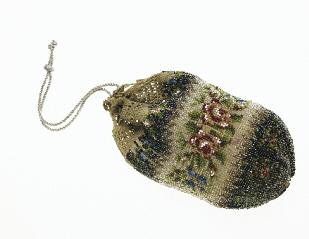 Making History
Making History
The origin of the saying about making “a silk purse out of a sow’s ear” is attributed to 18th century author Jonathan Swift. Even without easy access to a sow’s ear these days, handbags still are among the most popular of personal spaces, at least for women. Yet, handbags actually date back more than 5,000 years. The original purpose of a purse was to carry around one’s personal net worth—often in the form of coins, making ancient purses the accessory of choice of men not women. The Bible refers to Judas as having worn a purse.
Many centuries later, European men turned to leather pockets in their trousers (called “bagges” in the 16th century) and later on to small wallets in their pockets, where they stashed their cash.
European women began to devote their domestic skills to producing a fashionable feminine accessory known as the reticule, a delicate silk or velvet pouch with drawstrings and wrist straps to facilitate hand-carrying. By the end of the 17th century, the handbag had become—and remains to this day—an almost exclusive feminine accessory, the oft-maligned fanny packs and “man bags” notwithstanding.
Putting style, size and seasonality aside, a handbag represents a composite of its owner’s life, her taste and the times. Unlike the royals, who technically don’t need to carry anything for themselves, we commoners are on an obsessive quest to find the perfect container for our everyday belongings. Whether it’s called a handbag or a purse or a pocketbook (or a bolsa, borsa or sac a main for that matter), this predominantly feminine accessory has gone on many a personal journey…some anecdotal, others indelible, and still others preferably forgotten. Even when it has outlived its usefulness or its appeal—when its original newness has faded to a timeworn shabbiness—an old handbag can still hold a pocketful of memories.
Wendy Williams is all about curves. She isn’t shy about showing hers off, of course. And she isn’t above throwing one or two at the celebrities she interviews. The Wendy Williams Show is 60 minutes of live, hold-on-tight entertainment, where anything can happen and almost anything goes. Make no mistake, however. Williams is both under and in control. She understands her business as well as anyone and, although she lives for the moment, her eye is always on the horizon. Indeed, as EDGE’S Gerry Strauss discovered, the most important curve for Wendy is the one she always seems to be out in front of.
EDGE: When did you decide that you wanted to be in broadcasting?
WW: Sixth grade. I didn’t have a whole lot of interest in school, but I enjoyed reading books and I enjoyed writing. I knew I could do it. I thought that being a newscaster or a radio personality was definitely it. One of the two.
 EDGE: Who were your influences?
EDGE: Who were your influences?
WW: The black broadcasters in New York, like Sue Simmons, Vic Miles and Chi Chi Williams. In college, I majored in communications and minored in journalism. I immediately got involved with the college radio station, where I was reading news at the top of the hour. Radio was my second choice, actually, because I thought that you had to know an awful lot about music and you had to have an air of cool. I was a lot of things when I was younger, but cool was not one of them. I wasn’t in the in-crowd. So I read the news on the college radio station. One day, one of the DJ’s did not show up and they said, “You have to do it.”
EDGE: Were you scared?
WW: I was frightened to death. But I found that it’s not about cool. It’s not even about the music. Radio personalities—back then they called them DJ’s—were just the conduit from one song to the next. If you wanted the personality part kicked in, where I would know a little bit more about something, like: “That was LL Cool J, this new rapper on the scene with ‘I Need a Beat.’ When I was home at Christmas, LL Cool J performed at this club in yadda yadda yadda…and I heard that he left with three girls.” People would be curious, “What else do you know?”
EDGE: And as your career developed, how did you develop sources for celebrity gossip?
WW: At clubs. Fast forward to 1988. I was 25 years old and got my first New York job. It was at a dance music station called Hot 103.9, which is now Hot 97. I was a single, young New York girl making $60,000 a year, with no student loans and no car notes, living life like it’s golden. I would do two or three appearances a night, seven nights a week, being paid to go to nightclubs. I was in the VIP area so, of course, I would be seeing things that I would bring back to the radio. Through the years, that’s how it’s been.
EDGE: That kind of access is a powerful thing.
WW: It is. And when you have that access, you have to choose, if that makes sense. I chose the audience over the celebrities. People like that extra information, but you have to choose which side you’re on. You can’t serve two masters. You can’t be friends and go to a party and hang out with celebrities, and then betray their trust and talk about them. You cannot do that. That’s not being a good friend.
EDGE: As you worked your way to the New York market prior to 1988, did you spend time in some wacky places?
WW: Fortunately, I didn’t. It all happened pretty quickly for me. I spent eight months in Saint Croix, then I worked in Washington, D.C. for another eight months. I desperately missed Jersey while in Washington. They’re so conservative. And you can’t get a parking space! Then, right after D.C., I started working in Manhattan, and I lived in Jersey the whole time. Jersey has never been far from my heart.
EDGE: Your radio career coincided with the rise of the “shock jock,” and often you are mentioned as part of that genre.
WW: I don’t particularly care for the term “shock jock.” It brings up distasteful man humor and I don’t find anything that I say so shocking. My delivery is not so shocking—I speak like you speak. But I’ll take it as a compliment, only because it put me in good company with my friend Howard Stern, who is one of the greatest personalities on radio ever…which means that I must be one of the greatest personalities ever!
EDGE: Does that realness and honesty you bring to the air ever present a challenge for you when you’re off the clock?
WW: It can be challenging. When I walk in a room, people sort of react as if Godzilla walked in. They’ve always wanted to see or be near me, but they don’t know how to react. It’s like, “If I touch her will I burn? If she catches me looking at her, will she say something?” It’s partly my reputation and partly my presence. I’m taller than most men and women once I put my heels on, and I have a larger frame than the average woman—but it all works for me. I actually enjoy walking into a room and watching everyone scatter, because the truth is that I’m a pussycat. I’m honest, not mean-spirited, so whatever is making them scatter, I know that if they gave me a chance, they would love me.
EDGE: Celebrity gossip has become a 24-7 industry. As someone who helped to pioneer that type of reporting, what do you think of the way our celebrity culture has grown?
WW: I’m very happy about how the thirst for celebrity information has grown. But, if you pay close attention, you’ll notice that we continually hear about basically the same 150 celebrities. They are in the weekly magazines. They are on TMZ. Every once in a while, you’ll get a new celebrity in the mix. But it’s basically the same 150 celebrities. There are a lot more than 150 famous people out there, but they are not in the magazines or on TMZ.

Photo by Nadine Raphael
EDGE: Why is that?
WW: Because they live in Jersey. Because they live in Maine. Because they live in Connecticut. Not Manhattan. Not L.A. or Calabasas, where the Kardashians live. If Alec Baldwin doesn’t want to be bugged, then he should move to Jersey. Do you understand? We know where to get “papped” [photographed by the paparazzi]. In Manhattan, there’s a place called Michael’s. They have Celebrity Wednesdays. I only go there with my mother and father because they love the whole celebrity culture. I think it’s cute. When they come to the show, they come on a Wednesday and we go to Michael’s afterwards. They know to straighten up because, as soon as we open the car door, we’re going to get papped—and then put in the Daily News the next day. If I don’t want to get papped, I’m not going to go eat lunch at Fred’s At Barneys. I’m going to go up the street to Lair. There’s no paparazzi at Lair.
EDGE: So you think a lot of it is voluntary?
WW: Absolutely. Can I tell you something? Paparazzi aren’t just sitting in people’s neighborhoods taking pictures of them strolling with their kids. Fifty percent of them get photos because they go to places like The Ivy or Michael’s. And then the other fifty percent, they call the photographer and say, “I’m going to bring a blanket in the park and I’m going to have my kids.” Isn’t that stupid?Stupidest thing ever!

Photo courtesy of Essence Communications, Inc.
EDGE: Let’s talk about your show. For those who don’t know, The Wendy Williams Show is broadcast live.
WW: I love that.
EDGE: How was that decision made?
WW: They told me You’re going to be live and I said, Great. I’ve got stuff to do after the show. I’ve got groceries to buy. Nobody has time to be up in this dusty studio all day. At 11:01, I’m free. I go home, I become Wendy Hunter. We’re live out of New York four days a week. We tape Friday’s show on Thursday afternoon, so Friday I’m free to go to Home Depot, work on an outside project, whatever.
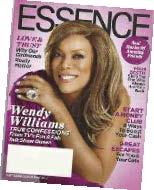
Photo courtesy of Essence Communications, Inc.
EDGE: Do you ever worry about something going wrong on live TV?
WW: I may make it look like perhaps something will go wrong, but remember, I had almost 25 years of broadcasting live radio four hours a day. I’ve been inducted into the National Radio Hall of Fame. I’ve won several awards. I’m part of an elite group. You don’t get that far by slipping up; you get that far by making it look easy. But it really is not. I curse like a sailor in real life but I’ve never cursed on the radio. I’m a trained broadcaster. So, for me, live TV? It’s the best.
EDGE: Who haven’t you interviewed yet, but want to? Who’s on your wish list?
WW: I would love to talk to Michelle Obama. I don’t even want to talk to her about First Lady stuff. And I wouldn’t ask her to do a push-up or to dance, or talk about issues. I’d want to talk about life. “When is the last time you drove a car, girl?What kind of moisturizer do you use?” I’d want to talk to her because she just turned 50, and I just turned 50. She’s a mother, I’m a mother. She’s a prominent person and I’m working on my prominence. In terms of having a wish list? Well, doing a talk show and being a professional talker, you realize that there really is no such thing as a wish list, because sometimes the very people that you wish for end up being the worst conversationalists. I’ve had better conversations with cab drivers than I’ve had with some celebrities I’ve met.
EDGE: If your show ever got to the point where they wanted to move it to the West Coast, would you consider that?
WW: Oh my gosh, I shudder and I wince and I wince and I shudder! There was actually an informal offer to do that back when I was in radio and I couldn’t do it. It’s a nice place to visit—all due respect—but I’m not that girl and those aren’t my people. These are my people in the Northeast.
EDGE: Will you reach a point where you’d want to do something other than TV, or just stop doing TV?
WW: I do have a date when I want this show to end if—God willing—it doesn’t get canceled. Listen, we’ve been renewed to 2017. I’ll need a few more years after that. I knew that when I signed up for this show, and I had the conversation with my husband. I told him that I don’t want to do this forever—and we hadn’t even gotten started at that point. I treasure my privacy. I treasure having a life. The best part about my job is actually doing my job. Maybe the worst part about it is taking pictures and doing autographs—the stuff that regular people would consider fabulous is really not. Right now, I’m taking steps to set things up to earn a living after The Wendy Williams Show, but behind the scenes as opposed to in front of the cameras. It’s a situation where my husband will take the reins, and my son will have a built-in opportunity to work in the family business. The Wendy Williams Production Company will create everything from reality TV to Lifetime movies to docu-series. That’s what I want next. I also want to establish a platform where I can do more public speaking—from keynote addresses to charity events to PSAs. I want to get out and be able to do things that I don’t really have the time to do now, things that would be helping to make the world a better place.
EDGE: Talk about the privacy issue if you would.
WW: Ten years ago, I could take my kid to Great Adventure and I didn’t have to think about what time or day we are going to go. These days it’s, “You know what?I can’t go. I’m going to have my assistant drive you and your friends.” Ten years ago, life was just different. I never want to discount my radio career, but it wasn’t as visual and it wasn’t as widespread. It was mostly an urban audience, and you knew where the How you doin’s were going to come from. Now they come from everybody. So yes, there are challenges, but nothing that I can’t get around. Also, I have to say that people treat you the way you put it out there. When I am driving around my town, I do all the Home Depot-ing, all the Target-ing, all of the grocery shopping—all of the everything—and people know it’s me. But when they say How you doin’ I say, “Hi, how are you?” and that’s it.
EDGE: Friendly.
WW: Right. You engage…and then you disengage. Busy, busy, busy. People respect that. EDGE
Editor’s Note: If you know anything about Wendy Williams, then you know that the entirety of this interview couldn’t possibly be contained within these pages. For more on her career choices, being a parent and role model, the future of radio, and her list of favorite things, log onto edgemagonline.com!
Robert A. Caro has spent nearly four decades chronicling the life of Lyndon B. Johnson, tracing his roots from a Texas farmhouse all the way to the White House. Through his biographies of Johnson and Robert Moses, Caro has illuminated the American political process and how power is wielded within our government. He is a recipient of the National Humanities Medal, and has won numerous other awards and accolades throughout his career. To EDGE interviewer Jesse Caro, he is something more than that: Caro is his grandfather (aka “Bop”). A recent college graduate embarking on a career in journalism, Jesse wielded his own political power to arrange a sit-down with the two-time Pulitzer Prize winning author. The topic: Caro’s own formative post-graduate experiences in his chosen profession.
EDGE: After graduating from Princeton—where you were the Managing Editor of the Daily Princetonian—you became a reporter. What drew you, early on, to journalism?
RC: That’s a question I’ve been asked before, but I’m not sure I know the answer to that. In the beginning, I liked trying to figure out how things worked, and wanted to explain that to people. When I first went to work for this little paper in New Jersey, I almost immediately narrowed that down to an interest in politics because, it seemed to me, that’s what matters. Almost immediately, I realized the idea of politics I had in college had very little to do with the way politics worked, and that I didn’t know how politics worked. Every day, I was learning something as a reporter. And since I felt like, if power in a democracy ultimately comes from us and the votes we cast, then the better informed people are about the realities of politics—not what we learned in textbooks in high school and college, but the way they really worked—the better informed our votes would be. And presumably the better our country would be. So I almost immediately started to be interested in politics for that reason.
EDGE: How did that lead you into investigative reporting?
RC: Purely by accident. I went to Newsday, and I was the low man on the totem pole. But Newsday was a crusading newspaper.
EDGE: Is that why you wanted to work there?
RC: Yes, that’s I wanted to work there. But I hadn’t done any crusading—I was still low on the paper. They had a managing editor named Alan Hathway, a figure straight out of the 1920’s and The Front Page—rambunctious, freewheeling, crusading. But he really didn’t like the idea of the Ivy League. He had always said he didn’t want anybody from the Ivy League in his city room. While he was on vacation, his assistant, I think as sort of a joke, hired me. Hathway was so mad when he came back, he wouldn’t talk to me. He would walk by my desk without saying a word. But Newsday was doing a terrific thing.
There had been an Air Force base in the middle of Nassau County called Mitchel Field, and the Air Force didn’t need it any more. Real estate developers were coming into to Nassau County and they wanted it.
EDGE: How was Newsday covering the story?
RC: Well, the FAA wanted to give most of the land to real estate developers and keep part of it as a general aviation airport—which means a corporate airport—so all these big companies could have corporate jets and fly into the middle of Nassau County. Newsday was trying to prove that influence was being used by the developers and big corporations on the FAA, but the paper wasn’t having success in doing that. So I was in the city room on a Saturday afternoon and the phone rings. It’s a guy from the FAA. He said, “I know that what you’re doing is right, and if you want to be able to prove it, I’ll let you. Just send someone down here…there’s no one here but me.”
EDGE: So this story fell into your lap.
RC: Yes, totally out of nowhere. It was the weekend of the Newsday picnic, and everybody went except basically me.
EDGE: Did you try to contact anyone?
RC: I called all the editors. Everyone was away; everyone was at this beach. Finally, I get some editor who tells me I’ll have to go myself. Well, I had never done anything like this before. So I drove down and the guy let me in, and he basically pointed me to a couple of file cabinets. He said, “Those are the things you want to look at.” I didn’t go home—I worked all that night and all the next day, and wrote a memo for the editors on what I had found. The Monday morning after this, Alan’s secretary calls early in the morning and says, “Alan wants to see you.” Alan had never said a word to me. All the way driving in I was thinking, I’m going to be fired…I’ve got to keep my head up. When I get to the doorway, I see he’s reading the memo about what I found in the files. He looks up and he says, “I didn’t know someone from Princeton could go through files like this. From now on, you do investigative work.”
EDGE: Is it something you’d wanted to do?
RC: Yes, but you say it like I planned everything out. That’s an exaggeration. I knew that what I wanted to do was politics. What I wanted to do was find out how politics really worked.
EDGE: You’ve told me in the past you worked for a county Democratic organization in New Jersey in the 1950s? Did that experience spur your interest in politics?
RC: It did. I graduated from Princeton in 1957 and got married the day after I graduated. We went on this honeymoon for two months, driving around the country, and got back somewhere around Labor Day. I went to work on a paper in New Jersey that was tied in with the Middlesex County and New Brunswick political machine. It almost sounds funny—their chief political reporter would be given a leave of absence for every election so he could write speeches for the Middlesex County Democratic organization. He had a heart attack, so he couldn’t work for a while. He wanted to make sure he had this speech-writing job when he came back, so he wanted to be replaced as speechwriter by someone who was no threat to him. So who better than this kid from Princeton? That’s why I got the job. There was an election coming up and Joe Takacs was the political boss of the city of New Brunswick—a guy who ruled that city with an iron hand. I really did get a look at politics because he really liked me, and he took me with him everywhere. But then the following thing happened. On election day, he did what I later found out was called “riding the polls.” His regular driver took off, and a police captain was the driver for the day. We drove around in this big black car from polling place to polling place. At each place a police officer—a lieutenant or a captain—would come over to the car and basically say that everything was in order. Then we got to this one place where there was a commotion going on between a group of black people and police officers. This [police officer] came over to the car and said something to the effect of, “We’ve had trouble here, but we’re taking care of it now.” I looked over, and they had brought two paddy wagons, and there was a bunch of policeman herding these neatly dressed men—ties and jackets—and young women none too gently into the paddy wagons. They had been trying to be poll-watchers, to make sure the voting was honest, so they had to be gotten rid of.
EDGE: How long did you stay on after seeing this?
RC: When this happened right in front of me, a number of things got to me. It was the meekness with which they were taking this treatment—as if it was expected and they were resigned to it, and I couldn’t stand it. I knew in that moment that I didn’t want to be in the car; I wanted to be out there with them. So the next time the car stopped I just opened the door and got out. I didn’t know it then, but my interests were coming more and more to politics, and more and more to how politics really work. I wouldn’t say I was interested in investigative journalism—I was interested in understanding how politics really worked. And then this [story] happened at Newsday, and Alan said to me, “From now on, you do investigative work.” With my usual savoir faire in moments like this, I said, “But I don’t know anything about investigative journalism.”
EDGE: I’m sure that’s what he wanted to hear.
RC: Well, he said, “I’ll sit you next to [Robert] Greene,” who was a great investigative reporter, and he taught me a lot. And Alan taught me a lot. I learned a lot of things that a lot of reporters never learned. I know how to go through court papers. I know how to trace land transactions. I learned that all from them. I was getting a lesson every day. I learned things then that have guided me all my life, and the simplest thing is: Turn every page. I was going through some files, and I asked Alan some advice about something, and I’ve never forgotten: He said, “Never assume a damn thing. Turn every page.” That has guided me through my whole life.
EDGE: You mean to be thorough, to make sure you don’t miss anything.
RC: Yes. You don’t assume. You never know what’s going to be on a piece of paper. When you get to the Lyndon Johnson Library, the first two floors are a museum. Then you come around the corner and there is this marble staircase. And here are Lyndon Johnson’s papers…there’s four floors of them. They go back—I keep wanting to measure this—it’s like hundreds of feet. The last time they counted, they said there were forty-four million documents, so you couldn’t possibly turn every page and read every page. You’d have to have many lifetimes to do it. My first book [on Johnson] was going to be almost all on his congressional period. So while there were thousands and thousands of boxes, the number of boxes that had to do with the congressional period was manageable—there were 349 boxes. I thought if I was doing what Alan taught me, I would go through every piece of paper in those boxes. It would probably take about a year and a half or something, but you can do it. And by doing that, I found out all these things that people thought could never be found out. All the biographies—there were already a lot of Johnson biographies when I started—they all sort of knew that Brown & Root, this big Texas contracting firm, had financed him. And everyone said, Well, we can never find out about it because no one would talk about it. But I said, “If I’m going to do this, I’m going to do this the same way I was as a reporter—I’m going to turn every page.” And in some file—whatever the file was, it didn’t seem to have anything to do with this—there was this telegram from George Brown, an actual telegram from George Brown to Lyndon Johnson in October, 1940 saying, Lyndon, the checks are on the way.
EDGE: How many years have you spent on Lyndon Johnson now?
RC: I started in 1976.
EDGE: I imagine that immersing yourself in one person’s life for that long must give you incredible insight into who that person is—which is something that I don’t think you could get from being a journalist. Is that something you were seeking, or is that something that just happened based on the nature of your work?
RC: That wasn’t something I was really interested in, in the beginning.
EDGE: Do you feel as though it’s something you have come to appreciate?
RC: If you spend that much time with someone, you feel like you know them. My interest is not telling the life of a great man.
EDGE: It’s in political power?

Robert and Jesse Caro. Never turn your back on grandpa!
RC: Yes, but you immerse yourself, and when Johnson is doing something, you say to yourself, “Well now he’s going to do something.”
EDGE: The way you might with a friend or a close acquaintance?
RC: A really close acquaintance that you’ve spent a lot of time with.
EDGE: Have you found that LBJ’s political life reflected his personal life? Or was Johnson a different person at home than he would have been in the White House or Congress?
RC: Johnson—I can answer quickly—he was the same person.

